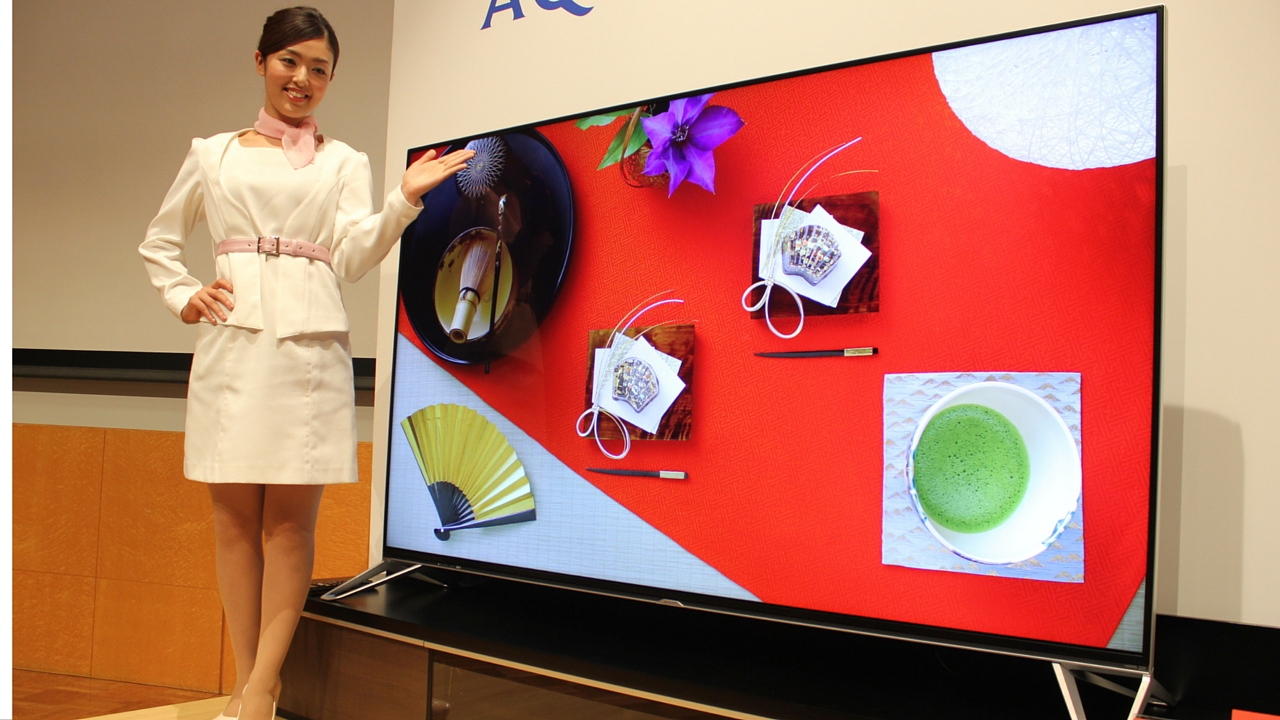Early Verdict
It's always great to get our first peek at new electronics that will be mainstream in a few years, but Sharp is pushing it with this 8K-upscaler.
Pros
- +
X8-Master Engine PRO
- +
Yellow sub-pixel
- +
Much cheaper than native 8K
Cons
- -
High price
- -
Negligible jump in detail
- -
Do we need 'virtual' 8K?
Why you can trust TechRadar
News of a native 8K TV from Sharp might have reached us already, but we're still recovering from witnessing what was – just a few weeks ago – the world's most advanced TV; the LC-80XU30.
On sale only in Japan, this 80-inch LCD TV is capable of up-converting 4K video into 8K video. Just to put that into perspective, it takes an eight megapixel image and creates a stunning 32 megapixel picture.
It may only be 'virtual' 8K tech, but make no mistake; the LC-80XU30 is where TVs begin to overtake mainstream cameras.
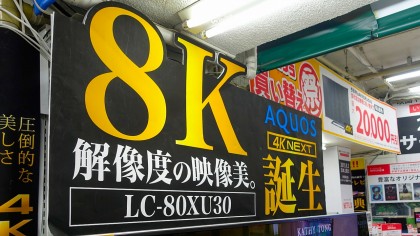
Only in Japan
However, a mainstream set this is not.
The LC-80XU30 is being sold in Tokyo's BIC Camera Ginza store for ¥1,680,000 (US$14,000, UK£9,000, AUS$19,400), though that is significantly cheaper than the ¥16 million Sharp is planning to charge for its native 8K panel, the LV-85001, despite it being a tad larger.
Marketed under the Aquos 4K Next badge, the LC-80XU30 achieves a massive 7,680x4,320 pixel resolution image – otherwise known as 8K – by upscaling 4K video and, remarkably, even Full HD.
Its LED backlight system also uses a new phosphor for more life-like colours.
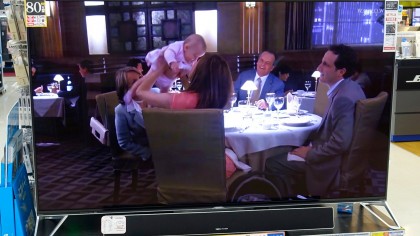
Not just pixels
It's not clear exactly how Sharp's X8-Master Engine PRO circuitry works, but we do know that it's not just about pixels.
The LC-80XU30 is equipped with an RGBY panel, adding a yellow sub-pixel to the standard red-green-blue mix, which is something we've seen Sharp do before. In our time with the LC-80XU30, it was colour rather than detail that most impressed, though both go hand in hand.
During some upscaled 4K footage, the nuances within saturations was sublime, and it was this that helped make the image look truly life-like.
Still, when judged purely on detail is upscaled 8K noticeably better than 4K?
Not hugely – perhaps we'll soon be asking whether an 8K screen has to be 100-inches to be worth having. That's probably a debate for tomorrow, at least outside of Japan.
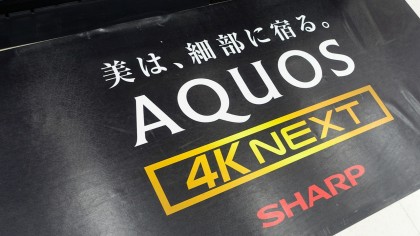
Technical prowess
Just to rubber-stamp Japan's general technical prowess over the rest of the world, the LC-80XU30 was paired with Sharp's 4K receiver-cum-recorder, the TU-UD1000, which was launched over a year ago and sells for ¥84,880 (US$707, UK£455, AUS$985).
It has a 1TB hard disk and can record about 50 hours of 4K programmes.
However, the LC-80XU30 itself has three digital TV tuners inside and also features Miracast, WiFi, four HDMI inputs, two USB connections, a unique 4K web browser, and a similarly standout 2.1-channel speaker system that has four 10W speakers and one 25W subwoofer, soundbar-style.
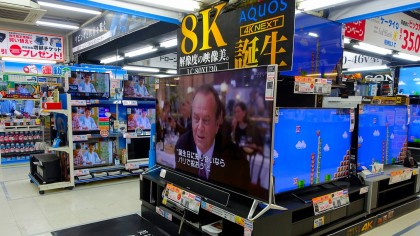
Sharp: badge of quality?
Although it was there at the dawn of the LCD TV with its Aquos line-up, Sharp is not a brand with much currency in most countries.
In fact, most people know Sharp for its sponsorship of Manchester United back in the 1980s.
However, in its native Japan the Osaka-based company is the biggest brand of all in TVs, claiming a whopping 37% of the market to Panasonic's 21%, Toshiba's 17% and Sony's 11%.
It's also second only to Apple in the smartphone market, and it's very likely that the screen in your iPhone or iPad was manufactured by Sharp.
When Sharp does something, Japan – at least – listens, and the arrival of the LC-80XU30 will get home cinema aficionados and any fans of cutting-edge tech salivating at the prospect of 8K goodness.
Besides, there's only five years to go before 8K broadcasts are due to kick-off in time time for the Tokyo 2020 Olympics.
Jamie is a freelance tech, travel and space journalist based in the UK. He’s been writing regularly for Techradar since it was launched in 2008 and also writes regularly for Forbes, The Telegraph, the South China Morning Post, Sky & Telescope and the Sky At Night magazine as well as other Future titles T3, Digital Camera World, All About Space and Space.com. He also edits two of his own websites, TravGear.com and WhenIsTheNextEclipse.com that reflect his obsession with travel gear and solar eclipse travel. He is the author of A Stargazing Program For Beginners (Springer, 2015),
What is a hands on review?
Hands on reviews' are a journalist's first impressions of a piece of kit based on spending some time with it. It may be just a few moments, or a few hours. The important thing is we have been able to play with it ourselves and can give you some sense of what it's like to use, even if it's only an embryonic view. For more information, see TechRadar's Reviews Guarantee.
